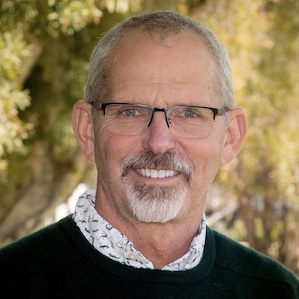July 01, 2022 by Kevin Higgins
A Prayer for Missionary Care

My wife Susan and I had just returned after a first term serving in another country and culture.
If someone made a list of the dos and don’ts for how to send people, our situation would have checked all the boxes for the “don’t” list.
While we were in the frying pan, we had not felt the heat. But, arriving back in the USA…
Everything felt wrong. Confusing. Loud. Rushed. It was 4th of July and when fireworks went off down the street, we hit the floor out of reflex.
Most would chalk that up to issues with our re-entry and reverse culture shock, and yes, those are very real. But one reason this was real in our lives was not the lack of re-entry preparation or care (though that was certainly absent!) but the lack of care and feeding throughout our time.
Now, we had received very good pre-field orientation. We knew what to expect. But between that and our return?
We were on our own.
Fast Forward
That was in the early 1980s. I am grateful that since that time there has been a large movement in the mission world related to caring for families in the field. It has become an international and multicultural movement. It has become holistic: touching every facet of human life, family life, addiction, spiritual formation, physical health and more.
That is encouraging and I have seen it up close and personal: the organization I led before coming to Frontier Ventures developed a whole focus on field partner care, with a multi-cultural team and a clear ethos and approach.
Many, most mission organizations have done so. These are encouraging signs.
And Yet
I won’t go into all the facets, but the study addressed the question about the preventable causes for missionary attrition. The study revealed nine factors, but two rose to the top: family factors and team/agency factors. In the family category were issues such as experiencing serious marital issues or needing to take care of extended family who live away from the mission field.
And in the second category, the team/agency factors, the highest rated factor was lack of missionary care.
That study seems to indicate that missionary care was the responsibility of the agency. And, I would hasten to say, agencies do bear a responsibility for being a part of the care of those they assist in sending (and my words are carefully chosen).
Who Cares?
This edition of Mission Frontiers asks about a different stakeholder in the mission effort: the arena of the body of Christ we call the church and especially the local church. Of course, we might ask, local to whom, but the assumption in the title is the churches in the sending countries of the ones being sent (there are local churches of course in almost every country where such sent ones are relocated).
The question posed is in keeping with the larger move over the past decades of local churches engaging more directly and responsibly as senders, as agents in the mission effort, and not just donators of human resources (“here, take our members”).
So, what is the role of churches in this arena of care?
Of course, an easy answer would be: if the study showed that a lack of missionary care was a key factor in attrition rates then churches are a potential pool, a resource, to add capacity.
But I will focus first on the area the study somewhat skimmed over, due to its focus, not due to any fault in the study. Namely, family issues.
In Theory …
… a healthy fully functioning local church would be deeply aware of the extended family of its members, especially those it might affirm as called to cross cultural lives. The same can be said for married couples.
… churches would be aware of fault lines and cracks and potential stress points.
… churches would also be able to help care for extended family members who remain in the sending country.
… churches would be able to add not only capacity but depth and quality to the whole fabric of missionary care.
The fact is that many churches are not the healthy vibrant organisms that they would need to be to provide the valuable asset they can be for their beloved ones serving in other cultures and contexts. In reality, there are churches that do these things, thankfully.
What Can I Add?
Thus, in this edition you will be introduced to many concepts, examples and helpful insights.
But my contribution is essentially a prayer, a prayer for the health of the whole body: local, global, agency, emerging movement, teams of workers. Each of those is part of the body of Christ, and each is able to be healthy and whole and vibrant and lifegiving.
Back Again
I am grateful that Susan and I sought and got the help we needed. It was ad hoc, word of mouth, given us by a fellow traveler on the journey to wholeness. But we found it. And because we did, we were able and eager a few years later to return to another context, and we were better able to thrive and live with resilience.
But I do wonder, what if? What if our first experience had been more richly adorned with the sort of care and life-giving support that we desperately needed, but did not know how to ask for?
May the Lord bring health to us all, and to the whole body of Christ


comments